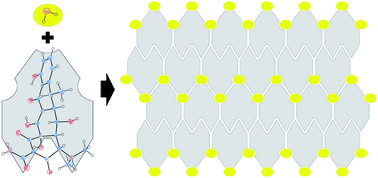The active pharmaceutical ingredient (API) doxycycline (DOX) is a broad-spectrum antibiotic mainly used in the treatment of respiratory and urinary tract infections and, like many drugs, its efficacy may be affected by the crystal form. Up to now, only the crystal structure of doxycycline hyclate (DOX·HYC) (generic name of brand names such as DORYX®, PERIOSTAT®, ATRIDOX®, and VIBRAMYCIN®) has been reported. This study presents the single-crystal X-ray diffractometry structural characterisation of another crystal form, doxycycline monohydrate (DOX·H2O) (generic name of brand names such as MONODOX® and ORACEA®). The DOX·H2O structure was compared with the known DOX·HYC one in terms of intra- and intermolecular geometries, and their melting temperature, water solubility and dissolution rate were measured. These data allowed us to establish relationships between solid state properties related to the pharmaceutical performance of the two DOX crystal variants and their supramolecular structures for the first time. Both hyclate and monohydrate forms crystallise the DOX molecules as zwitterions in which their dimethylamine groups are protonated and one of their hydroxyl groups is deprotonated. Whereas two conformers were observed in the DOX·HYC (i.e., the amine group is next to the enolate in one of them (T1) and beside the carbonyl in the other one (T2)), only one (T2) was found in DOX·H2O. Additionally, in the hyclate form, the presence of ethanol in the crystal lattice could be related to a rotation around the C–C bond of the amide group, directing the oxygen toward the amine group in one (T1) of the two conformers present in this solid state phase. Meanwhile, in the other crystallographically independent molecule (T2), the amide nitrogen is on the same side as the amine. However, only the conformer similar to T1 in DOX·HYC was observed in DOX·H2O. The crystal packing of DOX·H2O was stabilised by several intermolecular hydrogen bonds, with each drug entity interacting with another two DOX and three water molecules in such a way that a compact supramolecular network was formed. This structure was saturated in terms of hydrogen bonding, which could be related to its lower solubility and dissolution rate relative to DOX·HYC.


 Please wait while we load your content...
Please wait while we load your content...